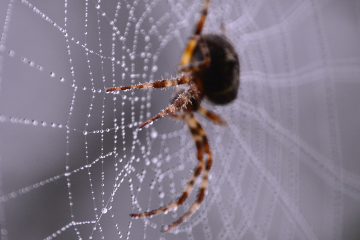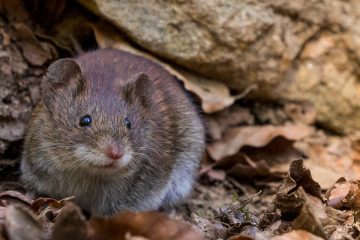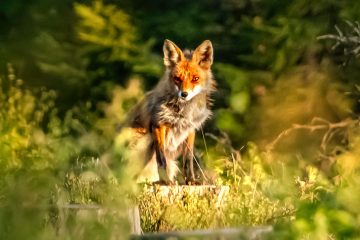Wasps are a frightening pest for many people. Setting up their nests near homes, they fly swiftly around doors and entryways and pack a powerful sting if they feel threatened.
Yet not all wasps sting, and they are a beneficial insect in some ways. Without wasps eating insects, there would be a gaping hole in the food chain. With about 30,000 identified wasp species, some are more common pests for humans than others. All this makes it important to know what kind of wasps are causing you problems before you attempt to get rid of them — or even they are wasps at all. Learning more about bees and wasps is key in safely ridding your property of an infestation.
Differences Between Bees and Wasps
Bees have robust, rounded bodies made up of one section, whereas wasps are slender and have a tapered waist area that connects their thorax to their abdomen. Bees are hairy, while wasps are more smooth and shiny. Bees feed on pollen, while wasps feed on insects. If you see something buzzing near a flower, it’s more likely to be a bee than a wasp. Honeybees die after stinging, whereas wasps can sting and fly directly away.
Physical Characteristics of Wasps
Wasps all grow up to about 1.5” and vary in size by species. However, their bodies are all composed of a head, thorax and abdomen separated by a tapered waist. They have one pair of wings, one pair of antennae, and six legs. All female wasp species have venom which they inject into their victims when stinging them. Only females can sting, and their stingers are located at the very end of their bottom half. This stinger also doubles as a reproductive organ through which the wasp can lay eggs.
Common Species of Wasps
Yellow Jackets
How To Identify:
- Grow to about 3/8” to 5/8”
- Yellow and black pattern that appears striped along its body
- Found worldwide, American yellow jackets are mainly found in the Southeast
- Their nests can be found inside structures, hanging from structures, and on the ground
- Live in colonies and work to fertilize the queen wasp’s eggs and build a nest to protect the entire group
Paper Wasps
How To Identify:
- Grow up to ¾” to 1” long
- Predominantly brownish-black with yellow to red markings along their head and abdomen, not to be confused with the striping pattern found on yellow jackets
- Can be found all throughout North America
- Like to build their nests near buildings, under eaves and closer to the ground on sturdy plants.
- Nests are made of paper or similar materials
- Like other wasp species, paper wasps won’t sting unless they feel like the colony is being threatened Tend to swarm if they feel their colony is being threatened
Hornets
How To Identify:
- Average size is 1.25”
- Predominantly black with light yellow or white stripes more structured than those of yellow jackets
- Prevalent throughout North America but more commonly found throughout tropical Asia
- Build their nests out of paper and paper-like materials
- Locate nests most often on sturdy plants or high trees, but sometimes near buildings and homes
- A social species of wasp which tends to behave similarly to yellow jackets and paper wasps Does not sting unless provoked
Mud Daubers
How To Identify:
- Usually grow to ½” to 1” long
- Predominantly black with yellow markings on their legs and thorax
- Significantly thinner bodies than those of other wasps
- Native to North America but found throughout the world
- A solitary wasp which does not live in colonies or build nests together with other wasps
- Builds a smaller nests for itself and its offspring
- Builds its nest out of mud, usually place near buildings
- Docile until provoked
- Does not swarm
Successfully understanding the dangers that wasps pose can be crucial in knowing how to prevent and treat wasps.
As with any pest, the best way to prevent nesting behavior is to take preventive action, especially during the spring and summer months.
Seal Off Entry Points
Changing weather patterns may open crevices around your doors and windows that wasps and hornets can easily take advantage of. If you notice your insulation suffering, take this as a cue that your home may be vulnerable to nesting activity as well. Shore up these entrance points, paying special attention to your roofing, basement, and attic.
Remove Food Sources
Make sure that you take away the food sources that wasps and hornets may be attracted to. Both of these pests are attracted foods that are sweet or contain protein. This includes pet food and old leftovers. The latter of these may be accessed through open garbage bags that you may leave in your backyard. Keep in mind that once a wasps or hornets identify a food source, they will imprint that source. Even after the food is removed, you may have to deal with pests coming back to that area to conduct future searches.
Wasps and hornets switch to sweetened foods in the summer and fall, when high-energy foods become less prevalent. Flying requires a great deal of energy for these insects, and they will begin to die off if they can’t find a food source. This means that they become much more aggressive — an important thing to remember if you spot a hovering pest. During this time of year, make sure that you do not leave open soda cans or other sugary foods lying around indoors or out. Cover your garbage cans and harvest fruits from any trees in your yard so that they do not fall and leave sources for wasps and hornets.
Steer Clear of Solitary Wasps
Stay away from bright colors on your clothing or floral patterns when you are spending time outside. Wasps and hornets may actually mistake these colors for flowers that produce nectar. Similarly, the strong scents from perfumes and colognes may smell like sweet-smelling food, especially in the latter part of the summer.




